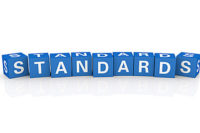The ICC is comprised of the International Conference of Building Officials (ICBO), Building Officials and Code Administrators (BOCA) and the Southern Building Code Congress International (SBCCI). The code is a model code that may be adopted by code jurisdictions in the United States or internationally. Currently, ASHRAE Standard 90.1-1999 is referenced in the existing code.
The 2001 standard provides the minimum requirements for the design of energy efficient buildings. It is written in mandatory, enforceable language, which can be adopted into building codes, and now addresses modifications to existing buildings.
"The inclusion of Standard 90.1-2001 by the ICC provides code bodies with the latest consensus based energy efficiency guidance available from ASHRAE," ASHRAE president Donald Colliver, Ph.D., P.E., said. "Since being published more than 25 years ago, Standard 90 has become the basis for building codes, and the standard for building design and construction throughout the United States."
In addition to ICC, ASHRAE is working with other organizations to encourage and facilitate the adoption of the 2001 standard into model energy codes. ASHRAE recently signed a partnering agreement with the National Fire Protection Association (NFPA) to incorporate Standard 90.1 in the NFPA consensus code set. Along with ASHRAE Standard 90.2-2001, Energy-Efficient Design of Low-Rise Residential Buildings, these standards will comprise the energy code portion of the NFPA code set.
Earlier this year, the United States Department of Energy adopted the 1999 standard to supercede Standard 90.1-1989 in its Energy Conservation and Production Act of 1992. The Act requires all federal and state non-residential building codes to include minimum efficiency levels that meet or exceed those in the 1999 standard. The DOE currently is reviewing the 2001 standard.


